
The last voyage of Captain James Cook Canadian Geographic
The second voyage of James Cook, from 1772 to 1775, commissioned by the British government with advice from the Royal Society, was designed to circumnavigate the globe as far south as possible to finally determine whether there was any great southern landmass, or Terra Australis.On his first voyage, Cook had demonstrated by circumnavigating New Zealand that it was not attached to a larger.
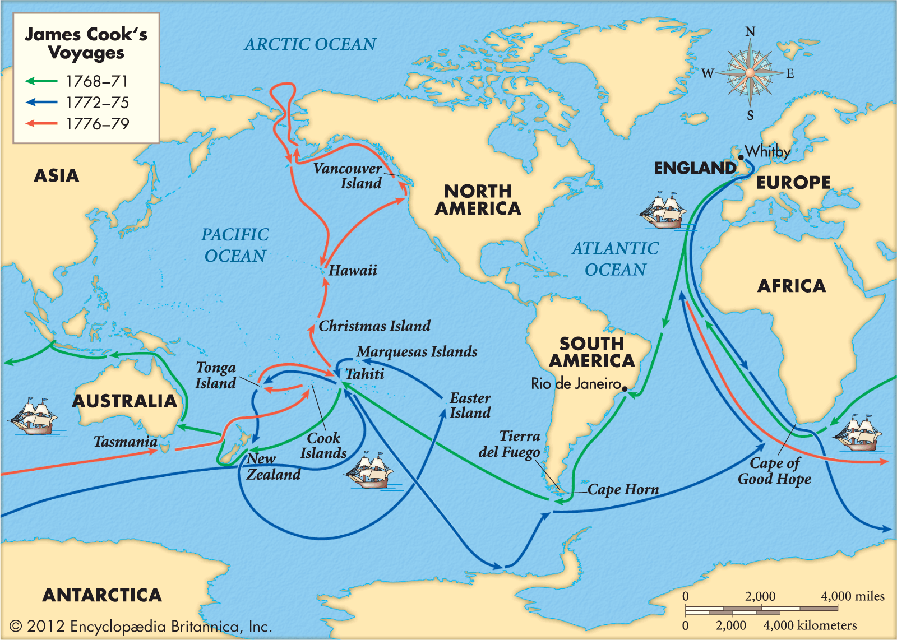
4. Sea Exploration (cont.)
Captain James Cook FRS (7 November [ O.S. 27 October] 1728 - 14 February 1779) was a British explorer, cartographer and naval officer famous for his three voyages between 1768 and 1779 in the Pacific Ocean and to New Zealand and Australia in particular.
James Cook's map of New Zealand One of the most important maps in New Zealand's history and
2024 Big Island Visitor Guides Visiting the Big Island of Hawaii soon? Be sure to grab your copy of one of our updated Big Island Visitor Guides. ~ Trusted by Millions of Hawaii Visitors Annually ~ Directions to Kealakekua & Captain Cook
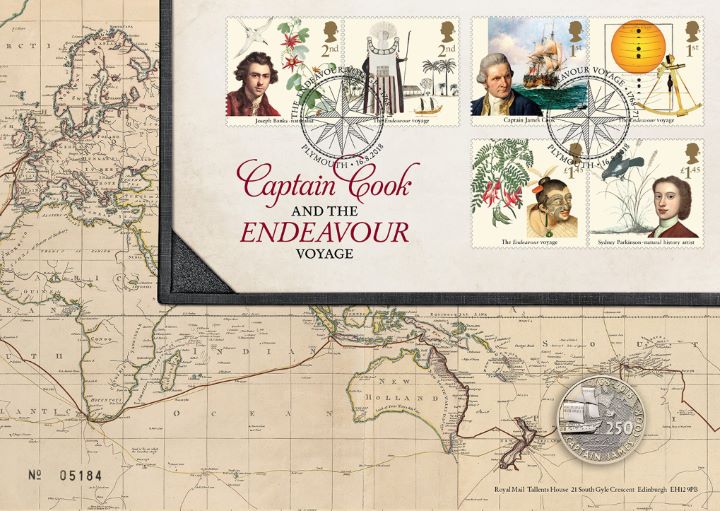
Captain James Cook, Map of Voyage First Day Cover / BFDC
Captain James Cook set out on a voyage across the Pacific 250 years ago, seemingly on a scientific voyage. But he carried secret instructions from the Navy with him as well. Wikimedia Commons.
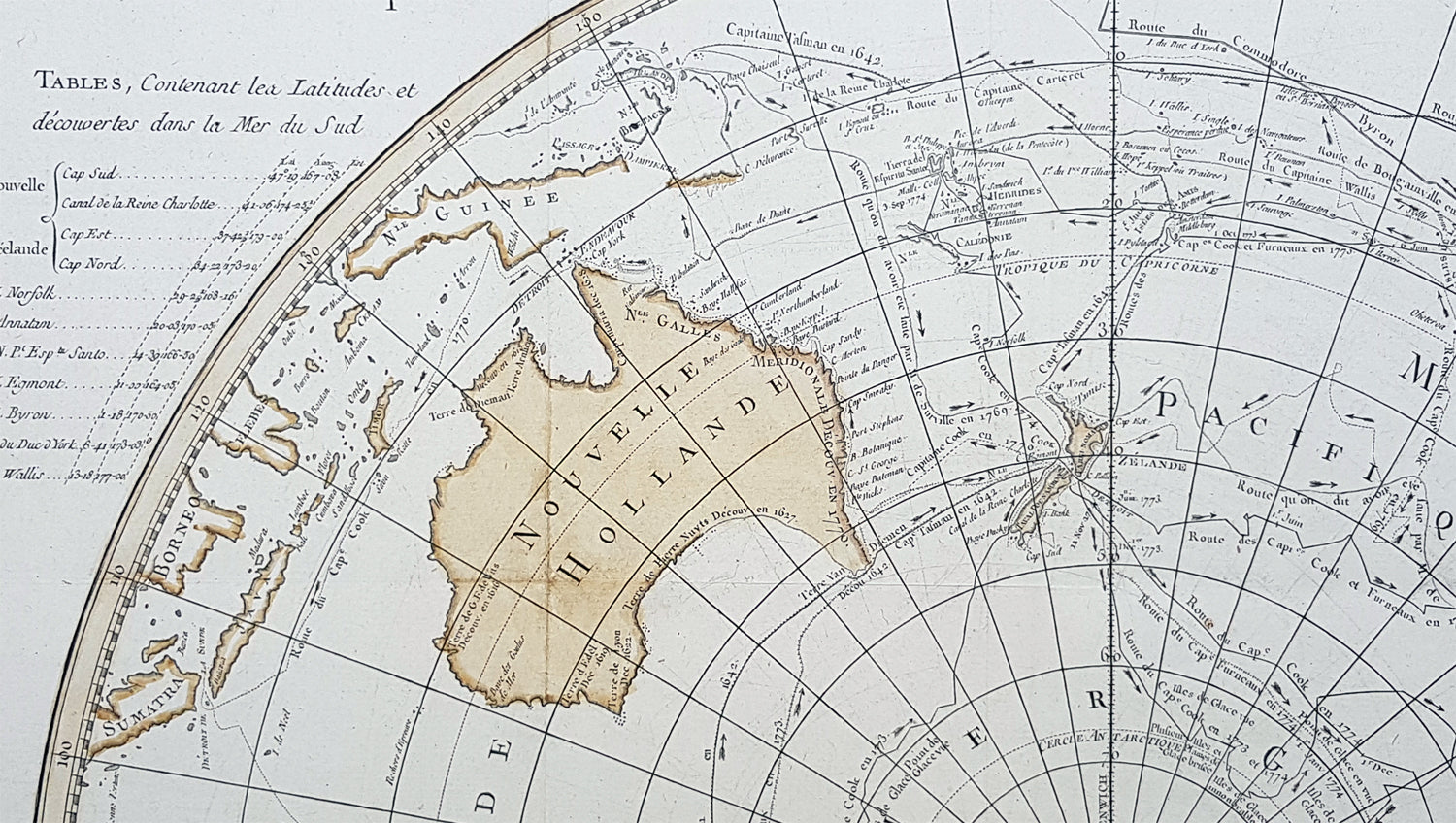
1778 Capt James Cook Antique Map The Southern Hemisphere, Australia, A Classical Images
The route of Cook's first voyage The first voyage of James Cook was a combined Royal Navy and Royal Society expedition to the south Pacific Ocean aboard HMS Endeavour, from 1768 to 1771. It was the first of three Pacific voyages of which James Cook was the commander.

Cook's maps Captain Cook’s voyages of exploration Stories State Library of NSW
James Cook (born October 27, 1728, Marton-in-Cleveland, Yorkshire, England—died February 14, 1779, Kealakekua Bay, Hawaii) British naval captain, navigator, and explorer who sailed the seaways and coasts of Canada (1759 and 1763-67) and conducted three expeditions to the Pacific Ocean (1768-71, 1772-75, and1776-79), ranging from the Antarctic ic.

1777 Capt James Cook Antique Map of the Southern Hemisphere, 1st Ed Classical Images
The cartography of Captain James Cook June 02, 2019 • Maps and Atlases • 4 min read It must have been quite the sight. On the 3rd of June 1769 - now 250 years ago - Englishmen were on the island of Tahiti looking through high-quality telescopes to watch a rare natural phenomenon: the transit of Venus across the face of the Sun.
Antique Print Club Antique World Maps, Early World Charts, Antique Prints and Antique Maps
Cook's Third Voyage The Navy wanted Cook to determine if there was a Northwest Passage, a mythical waterway that would allow sailing between Europe and Asia across the top of North America. Cook set out in July of 1776 and rounded the southern tip of Africa and headed east across the Indian Ocean.

A map of Capt. James Cook’s voyage discovering the Hawai’ian Islands. Captain james cook
Cook's map of New Zealand. This map of New Zealand as Cook charted it on his first visit in 1769-70 was published in Journal of a voyage to the South Seas (1773) by Sydney Parkinson, an artist who had accompanied Cook. Although there were some inaccuracies in Cook's map, few countries had been charted so well so early after their.

Manuscript Maps of Captain James Cook UWM Libraries
James Cook (1728-1779) In the lower right-hand corner of his magnificent Chart of the NW Coast of America and NE Coast of Asia explored in the Years 1778 & 1779, James Cook set down the first notations of the Oregon Coast on an accurate modern map. He created the map during his third voyage to the Pacific, an exploration of the great ocean that.
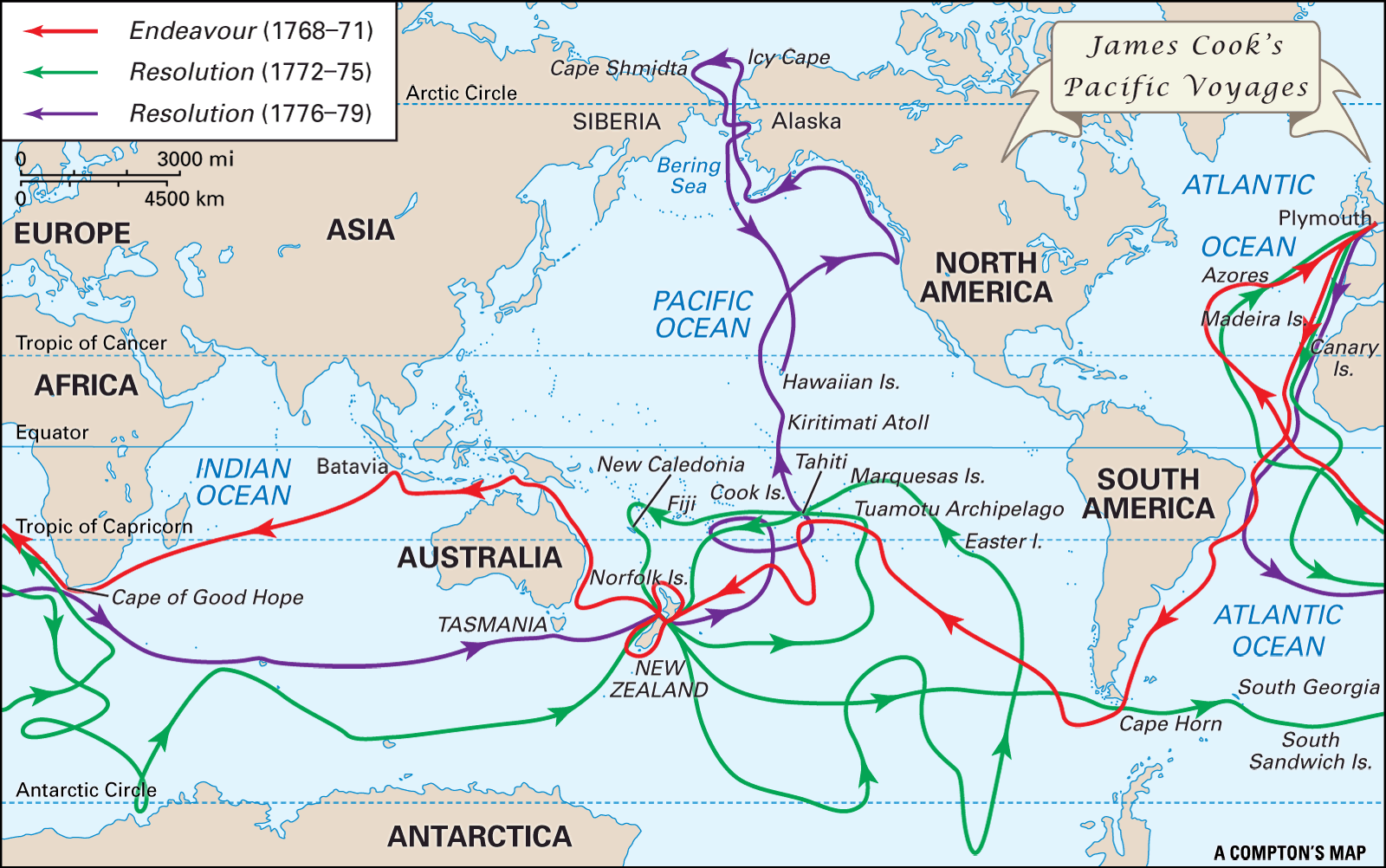
Captain James Cook in Western Newfoundland The Maritime Explorer
Captain James Cook in Alaska. Captain Cook is universally regarded as one of the most ambitious explorers of all time - in particular, his three expeditions in 1768-1771, 1772-1775, and 1776-1779 accomplished an impressive list of "firsts," including the first European sighting of Hawaii. While his exploration of the coast of Alaska in 1778 was.

Captain James Cook First Voyage Map
Now look at a map of the same area from Captain Cook's World. The maps are recognizable as all covering the same area, but Robson's map offers so much more to the modern reader who wants to follow Cook (as opposed to those of us who are fascinated by early maps). The map from Robson's book lifts Cook's movements from the static.

Captain Cooks Map of New Holland or New Found Land. Australia Australia map, James cook
Quick Facts: The map shows the three voyages of Captain James Cook. The first voyage is in red, the second voyage is in green and the third voyage is in blue. Following Cook's death, the route his crew took is in the blue dashed line. (Credit: Andre Engels) The map shows the three voyages of Captain James Cook.

A map of the voyages of British explorer Captain James Cook. Between 1768 and 1780, Captain Cook
Home / MAPS & GLOBES / CAPTAIN COOK CAPTAIN COOK Original and authentic maps from the voyages of Captain James Cook dating from 1770 to 1784. F irst voyage (1768-1771), Second voyage (1772-1775) and Third voyage (1776-1779). Alaska Antarctica & Southern Seas Asia Australia Canada Christmas Island & Cook Islands Fiji

Captain Cook's World Wall Map Published 1801 Shop Mapworld
James Cook, The Voyages of Captain Cook, ed. Ernest Rhys (Hertfordshire: Wordsworth Editions Limited, 1999), 11;. The map shows the three voyages of Captain James Cook. The first voyage is in red, the second voyage is in green and the third voyage is in blue. Following Cook's death, the route his crew took is in the blue dashed line.

the marlowe bookshelf The Voyages of Captain Cook
The route of Cook's third voyage shown in red; blue shows the return route after his death. James Cook's third and final voyage (12 July 1776 - 4 October 1780) took the route from Plymouth via Tenerife and Cape Town to New Zealand and the Hawaiian Islands, and along the North American coast to the Bering Strait.. Its ostensible purpose was to return Omai, a young man from Raiatea, to his.